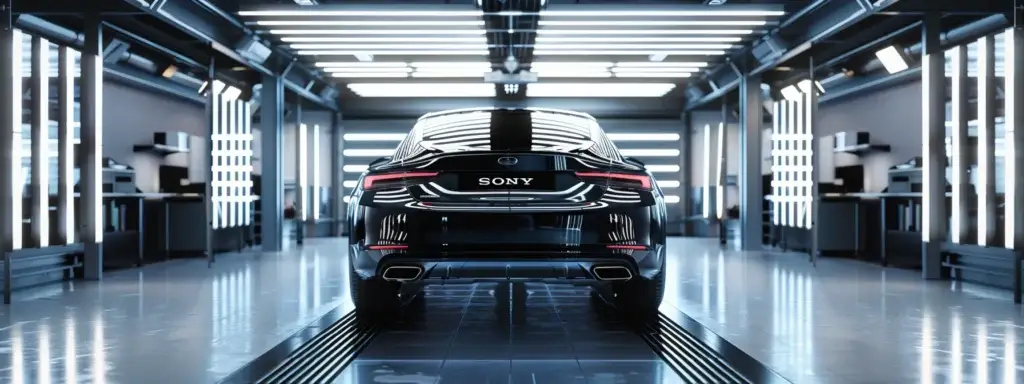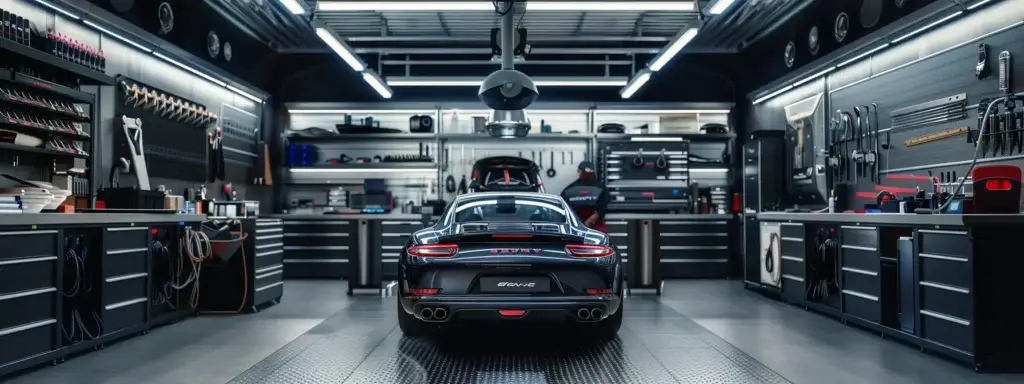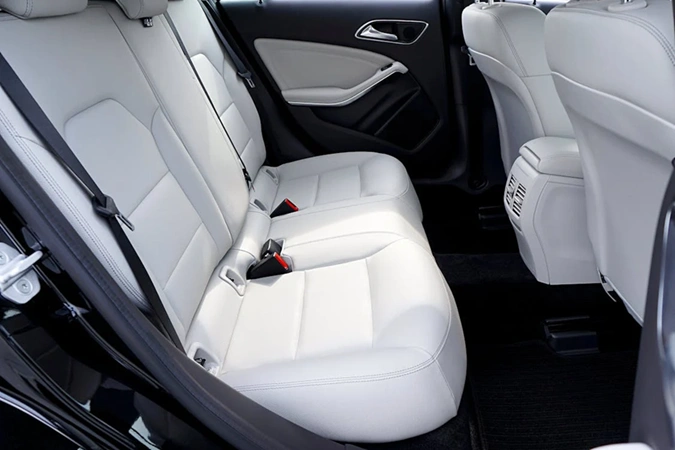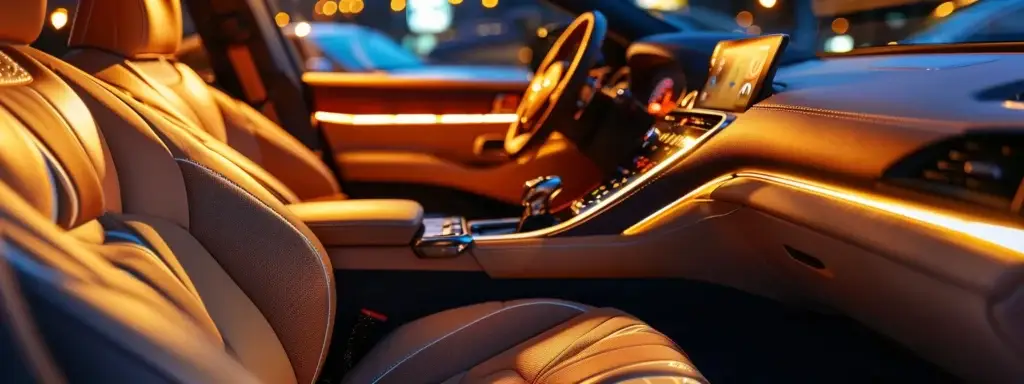- Mon - Fri: 8:00 AM - 4:00 PM / Sat: By Appointment / Sunday: Closed
- 0420 206 206
- Unit 41 / 566 Gardeners Rd, Alexandria NSW 2015
Advanced Car Detailing Techniques Every Enthusiast Should Know
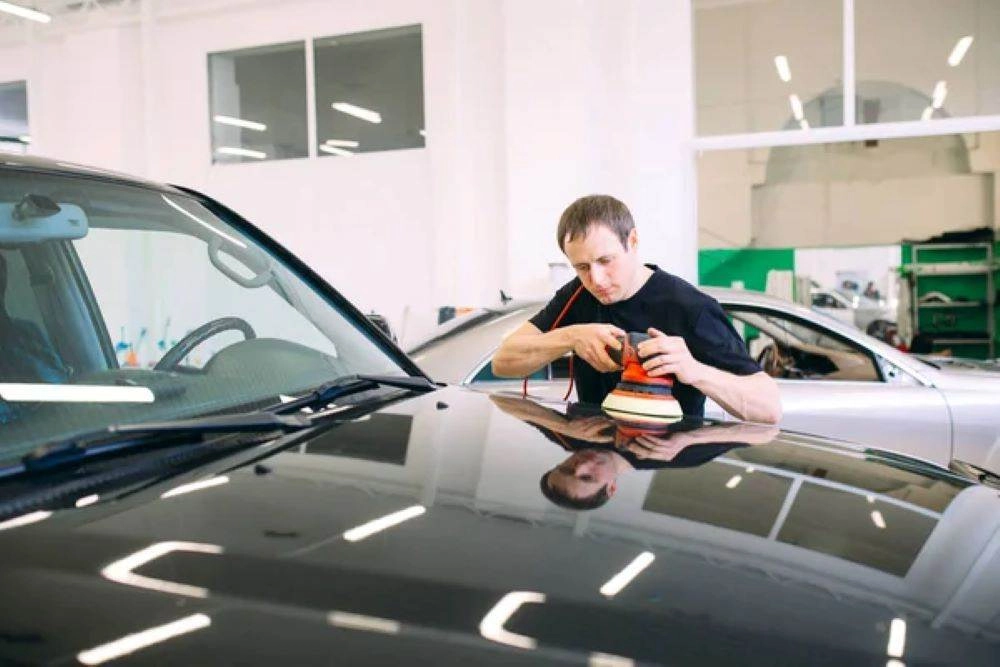
Jump to...
Introduction
Advanced car cleaning techniques are essential for car owners, allowing them to maintain their vehicles in impeccable condition. These methods go beyond basic washing and waxing, incorporating specialised practices such as clay barring, polishing, and the application of ceramic coatings to effectively remove grime, brake dust, and other contaminants.
By utilising these sophisticated detailing techniques, car enthusiasts can address imperfections like scratches and swirl marks while enhancing the vehicle’s overall appearance and durability. This guide explores various professional car cleaning methods, providing insights into achieving a flawless finish and ensuring long-term protection against environmental factors.
Advanced Car Wash Techniques
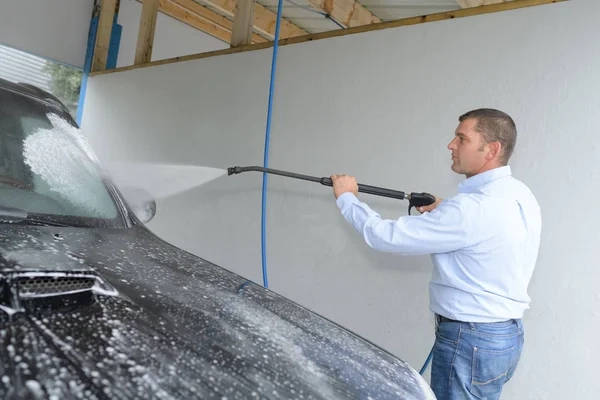
Hand Wash vs. Automated Wash
Hand washing your car offers unparalleled meticulousness and control, allowing detailers to achieve a superior clean. By employing the two-bucket method—one for soapy water and another for rinsing the wash mitt—you prevent dirt contamination and minimise the risk of scratches. This technique ensures that grime and contaminants are effectively removed without compromising the paint’s integrity.
In contrast, automated car washes provide convenience and speed, making them ideal for busy car owners. However, the use of brushes or soft cloth strips in automated washes can inadvertently cause micro-scratches, especially if the equipment is not well-maintained. Additionally, the quality of products used in automated systems varies, potentially affecting the overall cleanliness and protection of your vehicle. While automated washes are efficient, handwashing remains the preferred method for achieving a thorough and controlled clean.
Microfiber Towel Usage
High-quality microfiber towels are essential tools in advanced car detailing, playing a crucial role in preventing scratches and ensuring effective drying. These towels are extremely absorbent and soft, capable of capturing water and dirt particles without damaging the surface of your paint. To maximise their effectiveness:
- Proper Folding: Fold microfiber towels into quarters to expose multiple clean surfaces for drying, reducing the likelihood of streaks and water spots.
- Dedicated Towels: Use separate microfiber towels for different parts of the car, such as wheels and paint, to avoid cross-contamination with contaminants like brake dust.
- Regular Replacement: Switch out towels when they become too wet to maintain their absorbency and preserve the car’s pristine appearance.
Incorporating microfiber towels into your car cleaning routine not only enhances the drying process but also contributes to the overall longevity and aesthetic quality of your vehicle’s finish.
By implementing these advanced car wash techniques, you can ensure a spotless and well-maintained vehicle that shines with care and attention.
Secure Your Detail Now
Availabilities are limited. Make a booking today or call us to get started.
Paint Decontamination and Correction
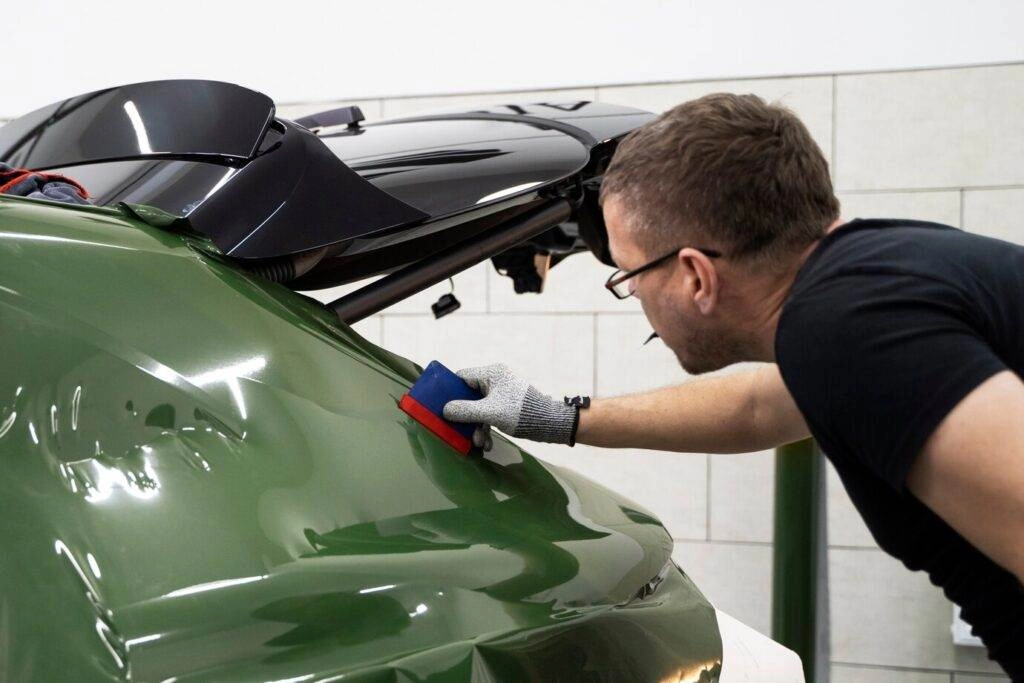
Clay Barring
Clay barring is an essential step in the car detailing process, aimed at removing embedded contaminants that regular washing cannot eliminate. These contaminants, such as road tar, tree sap, and industrial fallout, adhere tightly to the paint surface, causing grime buildup and potentially leading to scratches if not properly addressed.
- Process: Using a clay bar and a suitable lubricant, gently glide the clay over the car’s paintwork. The clay bar picks up embedded contaminants, leaving the surface smooth and ready for subsequent detailing steps.
Benefits:
- Smooth Surface: Removes stubborn contaminants, ensuring a flawless base for waxing or sealing.
- Enhanced Paint Clarity: Prepares the paint for polishing by providing a clean slate, which enhances the effectiveness of polishing compounds.
Precautions:
- Quality Microfiber Towels: Prevents new contaminants from scratching the paint during the clay barring process.
- Regular Replacement of Clay Bar Sections: Ensures that only clean clay contacts the paint, avoiding potential scratches from trapped grime.
By effectively clay barring your vehicle, you maintain the integrity of the paintwork and set the stage for a superior finish during the polishing phase.
Polishing for Perfection
Polishing is the next critical step after paint decontamination, focusing on eliminating fine scratches, swirl marks, and enhancing the overall clarity and depth of the vehicle’s paint. Utilising advanced tools and techniques ensures a high-gloss, mirror-like finish that rejuvenates the car’s appearance.
Techniques:
- Dual-Action Polishers: These machine polishers oscillate and rotate simultaneously, mimicking the hand motion of professional detailers. This dual action minimises the risk of creating new swirl marks or scratches while effectively removing existing imperfections.
- Choosing the Right Polish: Select a polish that matches the condition of your paint. Lighter polishes are suitable for newer vehicles with minimal imperfections, while heavier polishes are necessary for older cars with more significant paint defects.
Steps:
- Preparation: Ensure the paint surface is clean and free from any clay-barring residues.
- Application: Apply a small amount of polish to the pad of the dual-action polisher.
- Polishing: Work the polisher in overlapping, slow passes across the paint surface, maintaining consistent speed and pressure to achieve even results.
- Inspection: Periodically wipe away excess polish with a microfiber towel to assess the progress and identify areas that require additional attention.
- Multiple Rounds: For optimal results, perform multiple polishing passes with progressively finer polishes to achieve a deeper shine and eliminate remaining imperfections.
Benefits:
- Swirl Mark Removal: Effectively removes swirl marks caused by improper washing techniques or detailing mitts.
- Enhanced Paint Depth: Restores the paint’s natural depth and gloss, making the vehicle appear like new.
- UV Resistance: Proper polishing can also aid in enhancing the paint’s resistance to UV rays, prolonging its vibrant appearance.
Polishing revitalises the car’s exterior and provides a crucial layer of protection, ensuring that the meticulous work done during paint decontamination is preserved and highlighted.
Experience the Glosshaus Difference
Ride with confidence. Contact us now to schedule a professional detailing service.
Interior Detailing Procedures
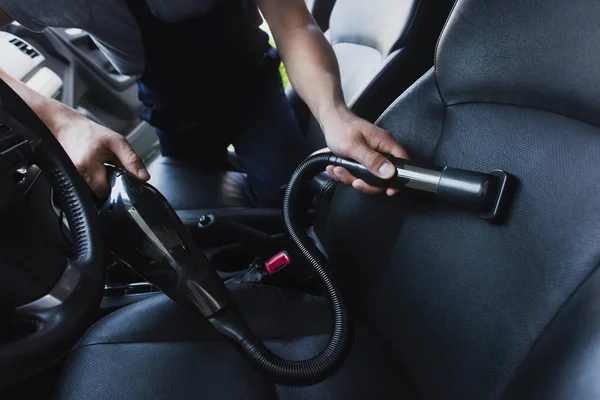
Deep Cleaning
A thorough interior clean is essential to remove dirt and grime, ensuring a fresh and sanitised environment. Follow these steps for an effective deep clean:
- Vacuuming
Start by vacuuming the entire interior to remove loose dirt and debris.
- Use various attachments to reach crevices and under seats.
- Pay special attention to high-traffic areas and tight spaces where grime can accumulate.
- Steam Cleaning
Steam cleaning is highly effective for sanitising surfaces without harsh chemicals.
- Utilise an industrial steamer to treat upholstery, carpets, and hard surfaces.
- The high-temperature steam penetrates fabric fibres, eliminating bacteria and removing stubborn stains.
- Spot Cleaning
Address any specific stains or spills immediately to prevent long-term damage.
- Apply a fabric cleaner to the affected area.
- Gently agitate with a brush or scrub pad, then blot with a microfiber towel until the stain lifts.
- Surface Wiping
Use microfiber towels to wipe down all hard surfaces, including dashboards, door panels, and consoles.
- This removes dust, fingerprints, and any remaining dirt particles.
- Ensure all surfaces are dry to prevent water spots and streaks.
- Final Inspection
Conduct a final walkthrough to ensure all areas are clean and sanitised.
- Look for any missed spots or lingering stains.
- Address any remaining issues promptly to maintain a pristine interior.
Secure Your Detail Now
Availabilities are limited. Make a booking today or call us to get started.
Leather Conditioning
Maintaining leather surfaces is crucial for preserving their appearance and longevity. Conditioning prevents cracking and keeps the leather supple. Here’s how to condition your car properly’s leather:
- Choose the Right Product
Select a high-quality leather conditioner suited for automotive leather.
- Avoid products with harsh chemicals that can damage the leather.
- Opt for conditioners that provide nourishment without leaving a greasy residue.
- Preparation
Ensure the leather surfaces are clean and dry before applying conditioner.
- Wipe down with a clean, dry microfiber towel to remove any dust or debris.
- Allow the leather to air dry completely if it has been recently cleaned.
- Application
Apply the conditioner evenly using a soft microfiber cloth or applicator pad.
- Spread a small amount of conditioner onto the cloth.
- Massage the product into the leather using circular motions, covering all areas thoroughly.
- Absorption
Allow the conditioner to absorb into the leather for the recommended time, typically 10–15 minutes.
- This ensures deep penetration and effective conditioning.
- Do not rush this step to maximise the benefits.
- Buffing
After absorption, buff the leather with a clean microfiber towel to remove any excess conditioner.
- This enhances the leather’s natural sheen and provides a polished finish.
- Ensure the surface is smooth and free of any residue.
- Regular Maintenance
Condition leather surfaces regularly, ideally every 3–6 months, depending on usage and environmental factors.
- Regular conditioning helps maintain flexibility and prevents brittleness.
- Incorporate this step into your routine to keep your car’s interior looking luxurious and well-maintained.
Experience the Glosshaus Difference
Ride with confidence. Contact us now to schedule a professional detailing service.
Window and Wheel Cleaning
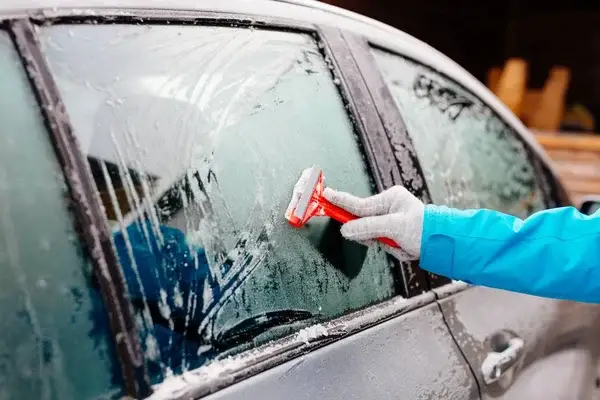
Cleaning Automatic Tinted Windows
To safely clean your car’s automatic tinted windows, follow these steps:
- Select the Appropriate Cleaner: Use a cleaner specifically formulated for tinted surfaces. Avoid harsh cleaning agents that can damage the tint or the window mechanisms.
- Apply with a Microfiber Cloth: Instead of spraying the cleaner directly onto the window, apply it to a high-quality microfiber cloth. This method prevents excess moisture from seeping into the window mechanisms and reduces the risk of staining your car’s interior.
- Wipe Using Circular Motions: Gently wipe the windows using circular motions. This technique effectively removes dirt and grime without compromising the tint’s integrity.
Regular cleaning with the right products ensures that your tinted windows remain clear and functional, maintaining both your car’s appearance and visibility.
Anti-Fog Application
Maintaining clear visibility in humid conditions is essential for safe driving. Follow these steps to effectively apply antifog agents:
- Thoroughly Clean the Windows: Start by cleaning the windows to remove any existing moisture or contaminants. This ensures that the antifog agent can adhere properly.
- Apply the Anti-Fog Agent: Use a high-quality antifog agent and apply it to a clean microfiber cloth. Avoid using dirty or rough materials that could scratch the glass.
- Spread Evenly: Spread the agent evenly across the windshield and windows, ensuring full coverage without leaving excess buildup. This creates a uniform protective layer.
- Allow to Dry: Let the product dry according to the manufacturer’s instructions. This forms a hydrophobic layer that repels moisture and prevents fogging.
Regular application of antifog agents, especially in humid environments like Sydney, ensures your windows remain clear. This enhances the aesthetics of your vehicle and significantly improves driving safety by maintaining clear visibility.
Secure Your Detail Now
Availabilities are limited. Make a booking today or call us to get started.
Paint Protection
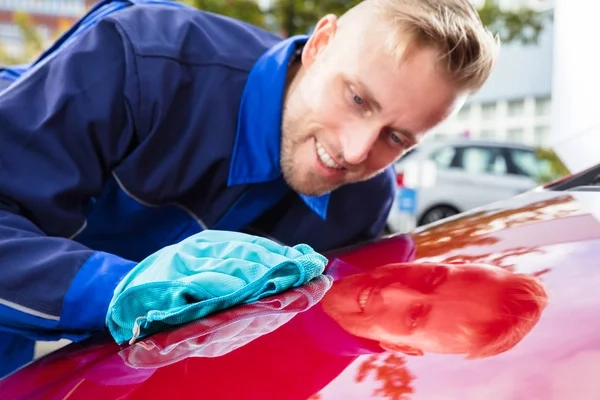
Sealants for Longevity
Sealants are an integral part of car detailing, providing a robust protective layer over the vehicle’s paintwork. These synthetic products are designed to bond with the clear coat, offering long-lasting defence against environmental factors such as UV rays, grime, and contaminants.
- Durable Protection: Sealants create a hard, glossy finish that resists oxidation and fading, ensuring the paint maintains its vibrant appearance over time.
- Extended Paint Life: By shielding the paint from harsh elements like acid rain, bird droppings, and tree sap, sealants help prevent premature deterioration and scratches.
- Ease of Maintenance: The smooth surface provided by sealants makes it easier to clean the car, as dirt and pollutants are less likely to adhere strongly to the paint.
Applying sealants involves thoroughly cleaning and preparing the paint surface, followed by evenly spreading the product using a microfiber towel or applicator pad. After application, allowing the sealant to cure properly ensures maximum effectiveness and longevity.
Ceramic Coatings
Ceramic coatings represent the pinnacle of paint protection technologies, offering superior defence and an unparalleled glossy finish. These coatings form a hydrophobic layer on the paint surface, which repels water and prevents contaminants from sticking.
- Superior Protection: Ceramic coatings provide exceptional resistance to UV rays, chemical stains, and etching from brake dust and other contaminants, ensuring the paint remains pristine.
- Long-Lasting Shine: The high-gloss finish achieved with ceramic coatings enhances the vehicle’s aesthetic appeal, making the paintwork look like new for years.
- Low Maintenance: With their self-cleaning properties, ceramic coatings make routine maintenance easier by reducing the adherence of dirt and grime, thereby minimising the effort required for cleaning.
The application process for ceramic coatings is meticulous, typically involving multiple layers to build up the protective barrier. Detailers use specialised tools to apply and cure the coating, ensuring an even and flawless finish. Regular maintenance, such as using pH-neutral cleaners, helps preserve the integrity of the ceramic coating, maintaining both its protective qualities and its stunning appearance.
Ongoing Car Maintenance
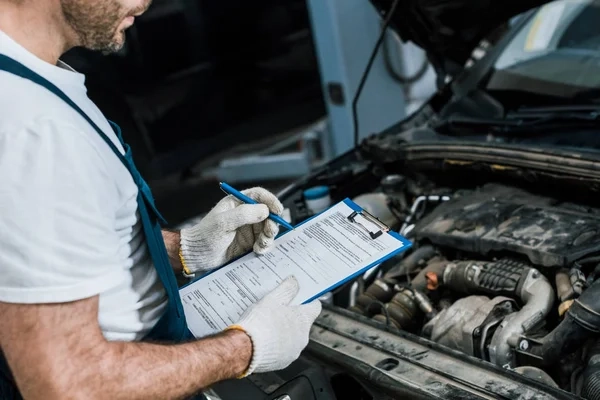
Scheduled Detailing Sessions
Regularly scheduled detailing sessions are essential for maintaining your vehicle’s pristine condition. By adhering to a consistent detailing schedule, you can prevent the buildup of dirt, grime, and contaminants that can damage your car’s paint and interior over time. Scheduling these sessions ensures that your vehicle receives comprehensive care, addressing both the exterior and interior aspects effectively.
Key benefits of scheduled detailing sessions include:
- Prevention of Grime Accumulation: Regular detailing removes layers of dirt and brake dust, protecting the paint from long-term damage and maintaining its glossy finish.
- Prolonged Paint Protection: Consistent application of protective coatings such as sealants and ceramic coatings enhances the durability of the paint, safeguarding it against UV rays and environmental contaminants.
- Maintaining Interior Cleanliness: Scheduled interior detailing keeps upholstery, carpets, and leather surfaces free from stains and wear, ensuring a fresh and comfortable driving environment.
- Early Detection of Issues: Regular detailing sessions allow detailers to inspect your vehicle thoroughly, identifying and addressing potential issues like scratches, dents, or mechanical problems before they escalate.
- Enhanced Aesthetic Appeal: Maintaining a regular detailing schedule ensures that your car consistently looks its best, retaining its value and making a lasting impression.
By collaborating with professional detailers from Glosshaus Bespoke Detailing in Sydney, you can tailor a detailing schedule that fits your lifestyle and keeps your vehicle looking like new year after year.
Experience the Glosshaus Difference
Ride with confidence. Contact us now to schedule a professional detailing service.
Inspection and Upkeep
Periodic inspections and minor upkeep tasks are crucial for retaining the quality achieved through advanced car detailing techniques. Regularly examining your vehicle allows you to address small issues before they develop into significant problems, ensuring your car remains in optimal condition between professional detailing sessions.
Effective inspection and upkeep practices include:
- Visual Inspection: Routinely check your car for any signs of paint imperfections like scratches, swirl marks, or contaminants that may have settled since the last detailing session. Pay special attention to high-touch areas such as door handles, mirrors, and bumpers.
- Cleaning Bottlenecks and Crevices: Use a detailing brush or microfiber cloth to clean dirt and debris from hard-to-reach areas, including the engine bay, wheel wells, and under the seats. Removing these contaminants prevents them from damaging the paint and interior surfaces.
- Maintaining Protective Coatings: Regularly reapply sealants or wax as recommended to maintain the hydrophobic properties that repel water and resist grime buildup. This upkeep is essential for prolonging the effectiveness of ceramic coatings.
- Tire and Wheel Maintenance: Keep your wheels and tires in top condition by periodically cleaning brake dust and applying tire dressing to protect against cracking and fading. Inspect tires for signs of wear and ensure they are inflated to the recommended pressure.
- Upholstery Care: Address spills and stains promptly, using appropriate fabric or leather cleaners to prevent permanent damage. Regularly condition leather surfaces to maintain their suppleness and prevent cracking.
- Addressing Minor Repairs: Tackle small dents or chips in the paint immediately to prevent rust formation and further deterioration. Using touch-up paint or seeking professional repair can help maintain the integrity of your vehicle’s exterior.
By integrating these inspection and upkeep practices into your routine, you can sustain the benefits of advanced car detailing, ensuring your vehicle remains both aesthetically appealing and functionally sound.
Conclusion
Advanced car detailing techniques, such as the two-bucket method, top-to-bottom washing, clay barring, paint correction with polishing, and the application of sealants and ceramic coatings, are essential for maintaining your vehicle’s appearance and protecting it from grime, scratches, and environmental contaminants. Professional detailers at Glosshaus Bespoke Detailing in Sydney, NSW, utilise these sophisticated methods to ensure a flawless, hydrophobic finish that enhances both the aesthetic and functional integrity of your car.
By choosing professional car detailing services, you invest in the longevity and pristine condition of your vehicle. Preserve your car’s showroom shine and protect its value by adopting these advanced techniques—contact Glosshaus Bespoke Detailing today to schedule your comprehensive detailing service in Sydney, NSW.
Frequently Asked Questions
Paint correction should be performed every 6–12 months or as needed based on the paint condition. Regular paint decontamination and correction address imperfections like swirl marks and scratches, ensuring a showroom-quality finish and extending the lifespan of your vehicle’s paintwork.
Yes, advanced interior detailing significantly enhances the lifespan of your car’s upholstery. Techniques such as deep cleaning and upholstery care remove dirt and grime, preventing wear and tear, while leather conditioning keeps surfaces supple and crack-free, maintaining a luxurious interior.
High-quality leather conditioners specifically designed for automotive use are ideal for conditioning leather seats. Products like Xpel detailing products or specialised leather conditioners nourish the leather, prevent cracking, and maintain suppleness, ensuring a long-lasting, luxurious finish without leaving a greasy residue.
Ceramic coatings offer a hydrophobic, long-lasting protective layer that resists UV rays, oxidation, and environmental contaminants. Unlike traditional waxes, which require frequent reapplication, ceramic coatings provide extended protection and a glossy finish that remains effective for years, reducing the need for constant maintenance.
To maintain your car’s finish between detailing sessions, regularly wash your car using a hand wash method with microfiber towels and quality car shampoos. Apply sealants or ceramic coatings as needed to preserve protection. Additionally, inspect your car frequently for dirt and grime buildup, and address any contaminants promptly to ensure the condition of your vehicle’s paint remains pristine.
Yes, improper use of high-end detailing tools and products can lead to paint damage such as scratches or swirl marks. Using dual-action polishers without proper technique, or applying sealants and ceramic coatings incorrectly, can compromise the protective layer. It is essential to follow manufacturer instructions and utilise quality tools to mitigate these risks.
To safely clean automatic tinted windows, use a cleaner formulated specifically for tinted surfaces. Apply the cleaner to a microfiber cloth instead of spraying directly to prevent moisture seepage into window mechanisms. Wipe gently using circular motions to remove grime without damaging the tint or window components.
If you notice scratches after a detailing session, assess their severity. For minor scratches, use a polishing compound with a dual-action polisher to gently remove imperfections. For deeper scratches, consider professional paint correction or consult your detailers to determine the best approach to restore your car’s paintwork.
Table of Contents

Ready to Shine?
Secure Your Detail Now
We provide 5-Star quality detailing,
Guaranteed
Recent Insights
Have you ever wondered what’s lurking in your car seats? Professional car seat cleaning is essential for maintaining a healthy, comfortable driving environment. This article
Is your car looking dull and neglected? A professional car wash offers more than just a quick rinse. This guide explores the key differences between
Car Detailing
Rediscover the joy of driving a flawlessly clean car.
New Car Protection
Protect your investment and keep your new car looking showroom-new.
Paint Protection Film (PPF)
Drive with confidence knowing your paint is shielded from everyday hazards.
Motorbike Detailing
Give your bike the specialised care it deserves for peak performance and head-turning shine.

